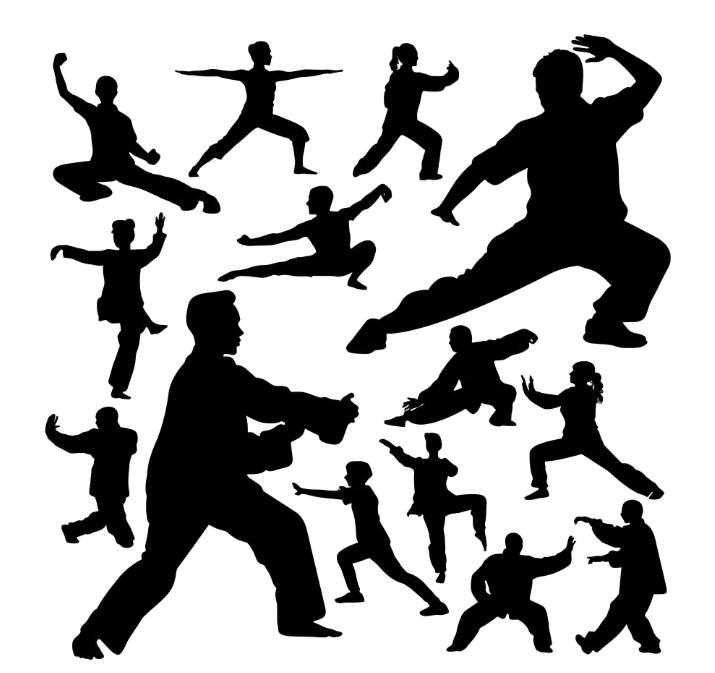
Qigong and Tai Chi have many similarities. Due to the different ultimate goals of their formation and development, they are different in many aspects. Therefore, Tai Chi and Qigong cannot be simply equated or replaced with each other.
As a dialectical and philosophical martial art, Tai Chi’s boxing theory reflects the truth of life. It has three functions: it can be used for self-defense and self-defense; it can be used for dealing with things and distinguish right from wrong; it can be used for health preservation and prolong life. Here, Tai Chi has the effects of Qigong such as nourishing Qi, unblocking meridians, relaxing, and adjusting Qi and blood throughout the body, but it is still an internal martial art in essence.
The respective characteristics of Tai Chi and Qigong
Tai Chi is a sport for the purpose of fighting, while Qigong is a fitness skill to stimulate human potential. The former is traditional martial arts, and the latter is traditional medical fitness and internal cultivation. Each has its own systematic theory.
Tai Chi is a sport with a strong sense of combat. It consists of many contents such as frame, single exercise, push hands, sparring, free fighting, weapons, etc. Tai Chi explores the practicality of throwing, hitting and grabbing, and in the breakthrough of high-level combat techniques, it rationally uses human thoughts and breathing to serve combat techniques, which has far-reaching significance in leading and strengthening combat techniques. It is a great leap in the history of martial arts development.
Tai Chi uses thoughts and breathing to coordinate boxing movements. The fundamental purpose is to achieve combat effects. At the same time, it overcomes the harm of boxing. Tai Chi also objectively has the function of curing diseases and prolonging life. Tai Chi is a perfect boxing technique for internal fitness and external combat.
Qigong is divided into two categories based on the body’s appearance: static exercises (standing, sitting, lying limbs still) and dynamic exercises (coordinating limb movements). In terms of operation, it is inseparable from the three adjustments: adjusting the body (adjustment of the body), adjusting the breath (adjustment of breathing), and adjusting the mind (adjustment of the mind). None of them can be missing. It enables the human body and mind to achieve self-adjustment and balance, thereby stimulating the human body’s potential, achieving the purpose of fitness, curing diseases, and prolonging life. Advanced special functions will appear “many magical functions such as distributing qi, internal and external vision, remote vision, prediction, etc.”.
Similarities between Tai Chi and Qigong
First, as one of the martial arts schools, Tai Chi has gradually reduced its combat role in modern society, and has highlighted the fitness value and traditional art performance value of Tai Chi exercises. Tai Chi masters have detailed the purpose of the “Thirteen Postures Exercise Song” and the view of prolonging life. Therefore, in terms of Tai Chi also having a fitness effect, it has similarities with Qigong.
Secondly, in terms of the origin of Tai Chi, it not only comprehensively absorbs the strengths of many martial arts boxing methods, but also absorbs the essence of ancient health-preserving exercises such as Daoyin and Tuna, making some essentials and methods of Qigong exercises an important part of Tai Chi basic skills.
Third, from the perspective of the requirements of Qigong training, Tai Chi also emphasizes the guidance of thoughts, requires a calm mind and a relaxed body, and requires the adjustment of the body, breath, and mind. From this perspective, Tai Chi can also be listed as one of the Qigong exercises.
Fourth, theoretically, they each use the ancient Chinese Yin-Yang theory as a guide, and use the Chinese medicine meridian theory to explain the phenomena that occur in their respective exercises.
Qigong and Tai Chi differ in many aspects
First, from the perspective of formation and development, Tai Chi was created to meet the needs of fighting and winning on the battlefield, and gradually developed in the continuous combat practice; while Qigong was mainly formed and developed in medical practice to meet the needs of fitness and health preservation.
Secondly, from the perspective of exercise methods and essentials, Qigong mainly achieves the goal of fitness by relaxing the body and mind to achieve a state of tranquility, and regulating the mind is its core content; Tai Chi starts with body movements, and through the process of going from loose to soft, and accumulating softness to hardness, it develops a soft, continuous, and penetrating twisting force.
Thirdly, from the perspective of their ultimate goals and effects, Tai Chi achieves the perfect combination of mind, qi, and strength through continuous practice of leading qi with mind and attracting force with qi, so that mind, qi, and strength can be achieved in combat; the ultimate goal of Qigong is medical effect, which is to strengthen the body and prolong life after practicing Qigong.
In short, Qigong and Tai Chi are similar but not exactly the same. Qigong has become an important part of Tai Chi’s basic practice, and some methods and essentials of Tai Chi have also become references for people in the Qigong community to create Tai Chi Qigong. Tai Chi conforms to nature and nourishes the spirit of righteousness, which is more suitable for the general public to practice.
